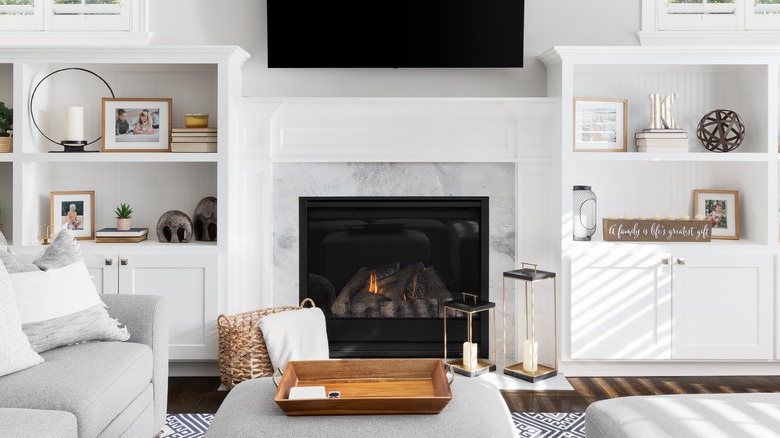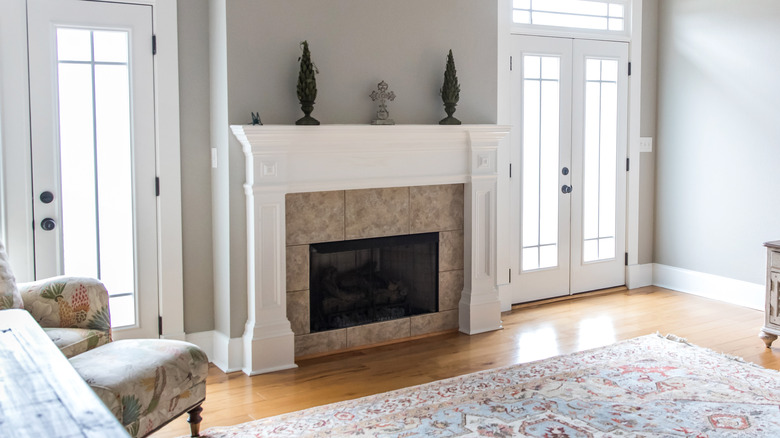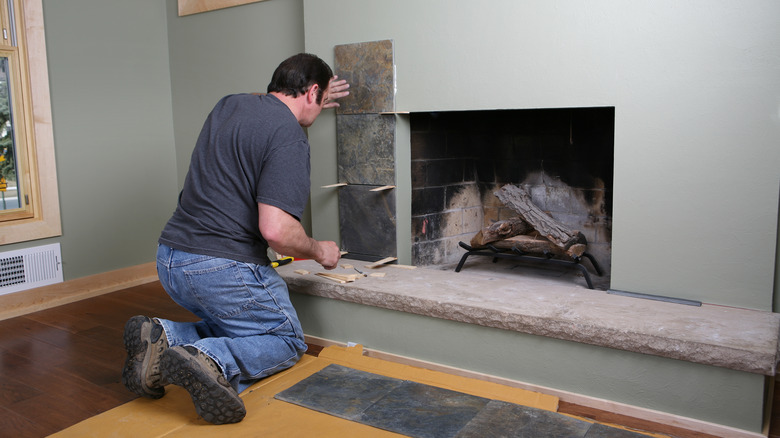Are Porcelain Tiles Suitable For A Fireplace Surround?
Whether you're adding a new fireplace or remodeling an existing one, choosing tiles for the surround is an exciting step. The color and style will largely influence the style of your home, and it can either bring a room together or make it feel incohesive. But before you start looking at aesthetics, you have to first focus on practicality. And that means choosing a material that can withstand heat and soot for winters on end. That's where porcelain comes in.
Choosing the wrong material for your fireplace can have some pretty disappointing consequences. If it can't stand up to the test of open flames and falling sparks, it will eventually become damaged. You will likely begin to see discoloration around the fireplace frame, chipped tiles, and hairline fractures. This can create a disheveled look in your living room, making the house seem old and unkempt. To avoid that, pick the strongest of tile options, aka, porcelain.
The pros of porcelain for your fireplace surround
Porcelain is one of those workhorse materials that seems to be able to handle any element you throw at it. That's because of the way that it is produced. It is made from very fine white clay baked in a kiln around 2,300 to 2,400 degrees Fahrenheit. These extreme temperatures are what make it so dense, and that, in turn, make it much less porous than similar materials, such as ceramic. That's why porcelain is often used in outdoor applications, appearing in everything from outdoor kitchens to patios. The tile can withstand cold winters, pouring rains, and baking hot summers. That's also why it's such a great pick for fireplace hearths.
It has a high heat tolerance, making it a much better pick over other options like marble or ceramic. It's so heat-tolerant that you can even install the tile inside the fireplace, and it won't crack or smoke. However, this is not advised since nothing is 100% foolproof, and depending on how much you use your fireplace, you may eventually see damage to the interior porcelain tile.
The drawbacks of porcelain tile in the hearth
When deciding if porcelain tile is suitable for your fireplace surround, the only drawback you need to keep in mind is that porcelain is harder to work with than similar materials such as ceramic, and therefore, more expensive. Because it's in the kiln for longer and higher temperatures, and because it is so dense and strong, porcelain tile requires specialized tools in order to cut it down to size. It's also much heavier than ceramic, making it a pain to carry and lift. This can especially be a problem if you have a high fireplace surround. Because of this, it's not the most DIY-friendly tile to use in a home remodel. Instead, it's better to hire a professional, which in turn will raise the cost even more.
The price for porcelain also increases depending on whether you get it unglazed, glazed, or polished, and the price also depends on what kind of arrangement (think stacked brick, herringbone, or diagonal.) you choose. Ultimately, porcelain is one of the best materials to use for your fireplace surround, but it may not be the most budget-friendly.


